AA & Protein Analysis
1/22
There's no tags or description
Looks like no tags are added yet.
Name | Mastery | Learn | Test | Matching | Spaced |
|---|
No study sessions yet.
23 Terms
proteins fxns
structural
transport
hormonal
catalytic
antibodies etc
conjugated proteins contain a ___ group ie
prosthetic
metalloprot, glycoprot, lipoprotein
protein size range
5,000 MW - 1 million
most are 12-36K MW (100-300 aa)
the ___ group determines most of the properties of the aa
R-
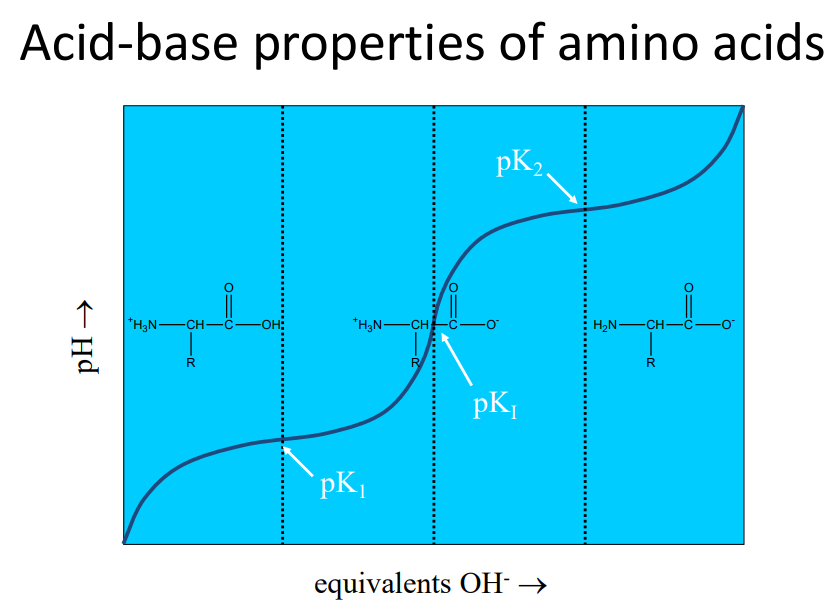
as pH inc → aa becomes more ___
neg charged
essential aa are ones that humans cannot synthesize ie
Leu
Ile
Val
Met
Phe
Trp
Thr
Lys
His(Arg)
all naturally occurring aa in prot are the _ configuration
L
measuring protein methods
chem (dye binding)
activity (enzyme rxn)
immunoassay
electrophoresis (ELP)
mass spectrometry
method dep on protein & its conc
total protein assay (Biuret, dye binding)
Cu2+ form violet complex w peptide bonds → intensity is proportional to # bonds
can modify w +tartrate or +iodide
**dye binding tends to underestimate low MW proteins!! → only detects 3 - 12 g/dL range
what is the method for measuring total urine protein?
pyrogallo red -molybdate
urine has low protein so need more sensitive
Benzethonium chloride → turbidity
turbidimetry: photodetector is parallel to incoming light
nephlelometry: photodetector is perpendicular …
dipstick uses tetrabromphenol blue (changes to blue if albumin)
much more sensi ~15 mg/dL
proteinuria
types
glomerular
tubular
overload - used for detecting lots of monoclonal light chains in multiple myeloma
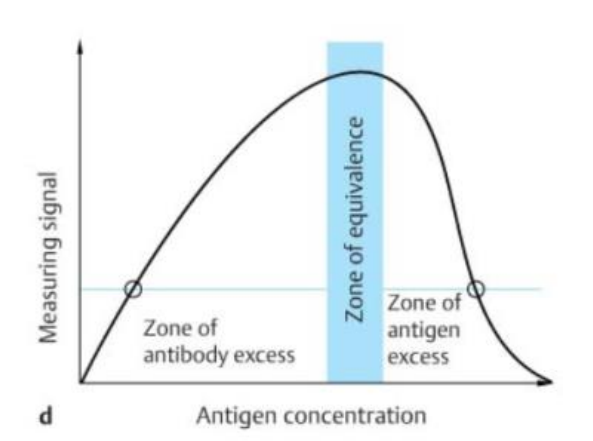
_ assays are susceptible to hook effect
turbidimetry
prozone = xs antibody (protein~body)
postzone = xs antigen
→ solution
wash xs analyte
dilution
why would airfuge not work for a lipemic sample that has a CRP test on it?
C-reactive protein would be lost in the lipid layer → do 1:20 dilution
enzyme unit is
U = 1 umol/min (substrate converted)
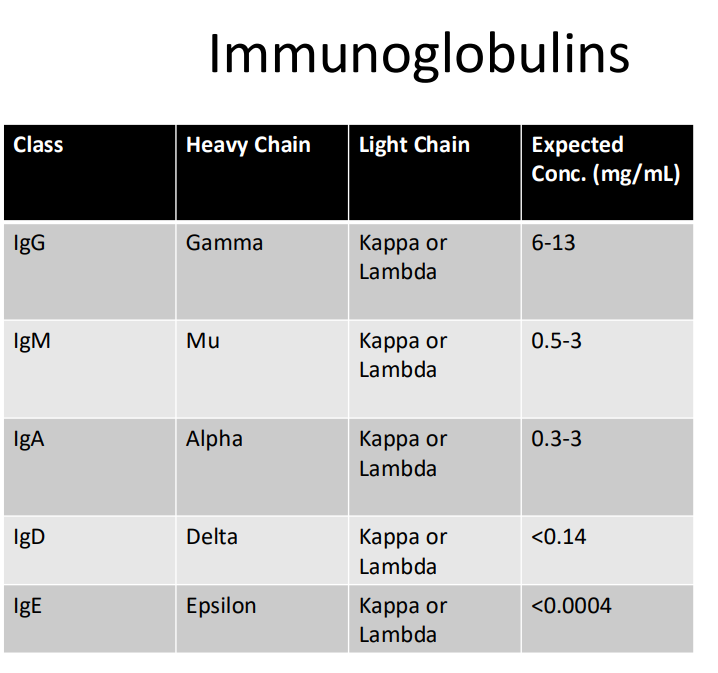
electrophoresis is based on
molecules electrical charge & size
anode is + charged
cathode is - charged
the isoelectric point is the _
pH at which a molecule is neutral charged
pI = (pka1 + pka2)/2
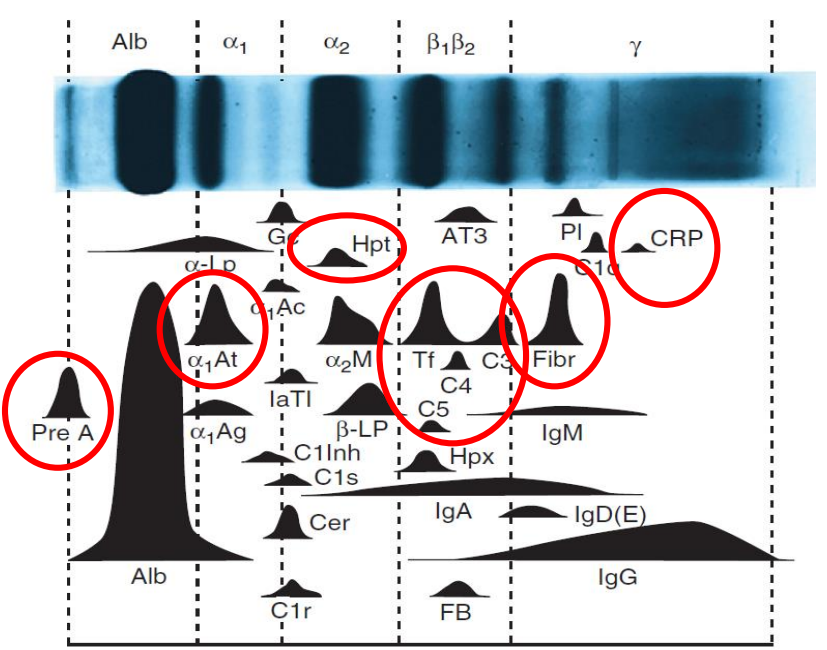
Alb: pre- & albumin
a1: a1-antitrypsin, alphafetoprotein
a2: haptoglobin
B1B2: tranferrin, beta lipoprotein
gamma: fibrinogen, CRP
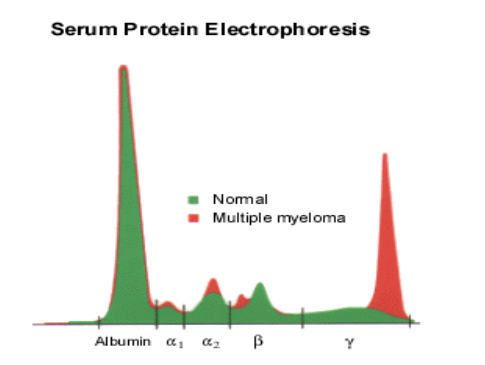
normal vs MM PEL
acute phase reactant proteins include
C-reactive protein (CRP)
serum amyloid protein (SAP)
fibrinogen
mannose binding lectin/protein (MBL)
complement
stim by IL-6
immunofixation is used for what
(similar to PEL) uses antisera for IgG, A, M, light chains kappa, lambda in sep tracks to visualize specific Ig
if have light chains & no G/A/M → check for IgD/E, may just have light chains only
immunotyping
serum + antisera against heavy chains and light chains
disappearance of the abnormality in antisera-treated pattern → type of protein indicated???
isoelectric focusing
migration of charged particles through pH gradient (via ampholytes in gel)
migration stops when pH=pI
detected by immunofixation (oligoclonal banding)